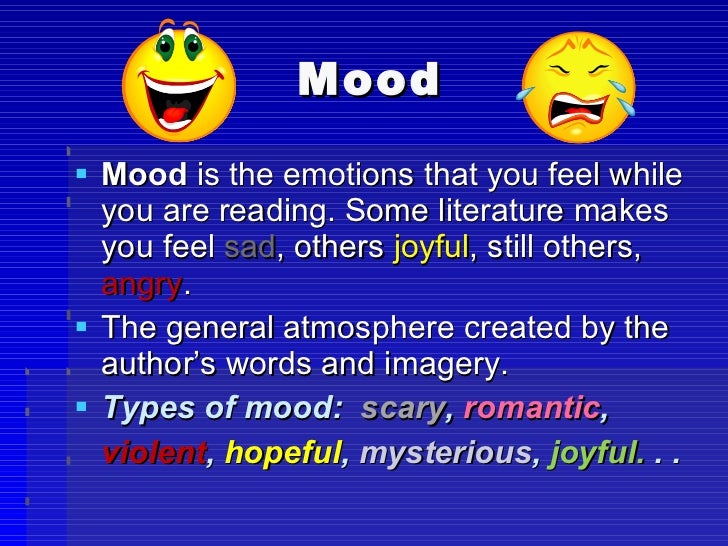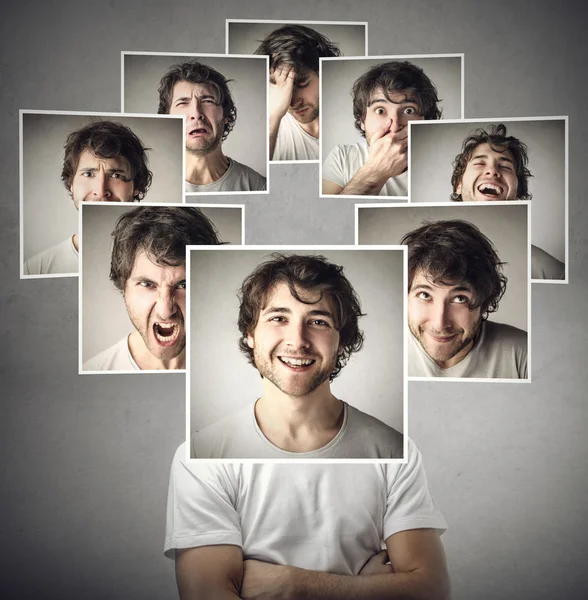

DEFINE DIFFERENT TYPES OF MOODS TV
We watch TV shows that make us laugh or cry. If you need help finding a mental health professional, then check out our FindCare tool here.Throughout life, our feelings influence the choices that we make. Some of the more common modifications include eating a healthy and balanced diet of regularly timed meals, seeking out family and friends for support, taking the time to learn about and understand your mood swings, and making time to talk to a professional. Lifestyle changes are part of an overall treatment plan for bipolar disorder.
DEFINE DIFFERENT TYPES OF MOODS TRIAL
Popular forms of therapy for bipolar disorder include cognitive-behavioral therapy, psychoeducation, and interpersonal and social rhythm therapy.Īdditionally, a clinical trial found that a particular type of therapy (well-being therapy) is an effective intervention during euthymic states. Psychotherapy, or talk therapy, can help you understand bipolar disorder and come up with ways to manage the moods. There are several medications available for treating bipolar disorder including mood stabilizers, antipsychotics, antidepressants, and in some cases, benzodiazepines. Standard treatment options for bipolar disorder include medication, psychotherapy (talk therapy), and lifestyle changes.


Documenting the amount of time spent in a normal state - not just in depression or mania - can help direct your type of treatment. Since the moods associated with bipolar disorder range from depression to mania, with euthymia in the middle, it’s essential to include this middle or steady state in an overall treatment plan for bipolar disorder. Treating bipolar disorder includes assessing euthymic moods. Because of this, you’ll often need to work with your doctor and therapist to manage your symptoms. Treatment considerations for bipolar disorderīipolar disorder is a chronic mental illness, which means there’s no cure. The emotional reaction you have is congruent or in agreement with the situation While a euthymic mood is considered a relatively normal or steady state, there are a few ways that you can experience euthymia.Īffect in a euthymic state means that you respond appropriately to theĮuthymia is evident when your emotions match the situation. This points to the need for treatment that also focuses on anxiety disorders. In other words, you may still experience symptoms of an anxiety disorder when in a euthymic state or mood. Researchers found that anxiety is prevalent even when moods are adequately controlled. A 2016 study found that anxiety disorders are quite common with bipolar disorder. enthusiastic (this is typically a moderateĪnother area to consider when talking about the role euthymia plays in bipolar disorder is the presence of anxiety disorders.While the experience of euthymia varies from person to person, some of the more common signs that you’re in a euthymic mood include feeling: When you’re in a euthymic mood, you’ll likely experience periods of calmness and happiness.Įuthymia is dramatically different from the periods of sadness and hopelessness that you feel when experiencing depression, or the extreme peaks of energy you experience when in a state of mania. Being able to identify a euthymic mood is important when trying to distinguish between states of mania or depression, and states of calm and steady moods.


 0 kommentar(er)
0 kommentar(er)
